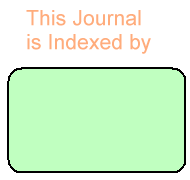Muhammad Ahsan1,
Nasir Abbas1 ![]() ,
Amjad Hussain1,
Hamid Saeed1,
Pervaiz Akhtar Shah1,
Sohail Mohammad2,
Muhammad Sohail Arshad3
,
Amjad Hussain1,
Hamid Saeed1,
Pervaiz Akhtar Shah1,
Sohail Mohammad2,
Muhammad Sohail Arshad3
For correspondence:- Nasir Abbas Email: nasirabbas77@gmail.com Tel:+923317724909
Received: 13 May 2015 Accepted: 9 September 2015 Published: 31 October 2015
Citation: Ahsan M, Abbas N, Hussain A, Saeed H, Shah PA, Mohammad S, et al. Formulation optimization and in-vitro evaluation of oral floating captopril matrix tablets using factorial design. Trop J Pharm Res 2015; 14(10):1737-1748 doi: 10.4314/tjpr.v14i10.2
© 2015 The authors.
This is an Open Access article that uses a funding model which does not charge readers or their institutions for access and distributed under the terms of the Creative Commons Attribution License (http://creativecommons.org/licenses/by/4.0) and the Budapest Open Access Initiative (http://www.budapestopenaccessinitiative.org/read), which permit unrestricted use, distribution, and reproduction in any medium, provided the original work is properly credited..
Purpose: To develop a zero-order sustained release floating formulation of captopril, and optimize its drug release for enhanced oral bioavailability.
Methods: A relatively new approach, 32 full factorial design, was used to formulate floating captopril matrix tablets and to systematically optimize its drug release using varying levels of xanthan gum and hydroxypropyl methylcellulose (HPMC) K100M polymers. Calcium carbonate was used as gas-generating agent. After setting the levels by preliminary trials, nine tablet formulations (F1 - F9) were prepared by wet granulation method using Design Expert Software® - suggested combinations of polymers. The concentrations of HPMC K100M (X1) and xanthan gum (X2) were chosen as control variables. Conversely, the response variables selected were timed to release 50 % of the drug (t50%) at 6 h (Q6) and 12 h (Q12). Fourier transform infrared (FTIR) spectroscopy and differential scanning calorimetry (DSC) were used to assess compatibility between the drug and the excipients. The validity of the developed mathematical equations was assessed by designing three extra check-points.
Results: The response surface plots drawn demonstrated the suitability of the hydrophilic matrix-forming agents for formulating controlled release floating tablets of captopril. FTIR and DSC spectra showed no noticeable incompatibility between drug and polymers in both physical mixtures and in formulations. Floating time lag remained < 5.5 min with floating duration > 12 h. Considerable agreement was observed between predicted and actual release parameters. Fitting the data into different kinetic models showed that non-Fickian behavior for diffusion exponent (n) differed from 0.588 and 0.811.
Conclusion: Optimum formulation (F4) showed satisfactory release profile. Moreover, the study successfully demonstrated influence of polymer blends in controlling release variables.
Archives


News Updates